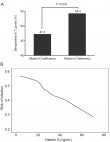Lower vitamin D level is associated with higher prevalence of Toxoplasma gondii infection – a national survey study
Abstract
Objective: Vitamin D deficiency has been found to be associated with a high susceptibility to infections. The present study was to explore the relationship between vitamin D and Toxoplasma gondii (T. gondii) infection based on a nationally representative database.
Methods: The study data came from the National Health and Nutrition Examination Surveys (NHANES) 2001-2004. Participants under 50 years old received both toxoplasma antibody test and serum vitamin D level test. The multivariate logistic regression and the propensity score matching methods were used to adjust potential confounders. All analysis was conducted by R 3.6.2.
Results: A total of 10613 participants were included in this study, among them 3973 (37.4%) were diagnosed with vitamin D deficiency and 2070 (19.5%) were positive in T. gondii antibody (seropositive group). Vitamin D deficiency was found in 42.3% of the seropositive group, compared to 36.3% in seronegative group (P<0.001). After adjusted for sex, age, body mass index, smoking history, drinking history and testing season, vitamin D deficiency was associated with higher risk of T. gondii infection rate (OR=1.303, 95% CI=1.136–1.495, P<0.001). This result persisted in the propensity matched cohort.
Conclusions: Low serum vitamin D level is associated with higher seroprevalence of toxoplasmosis in American population aged < 50.


